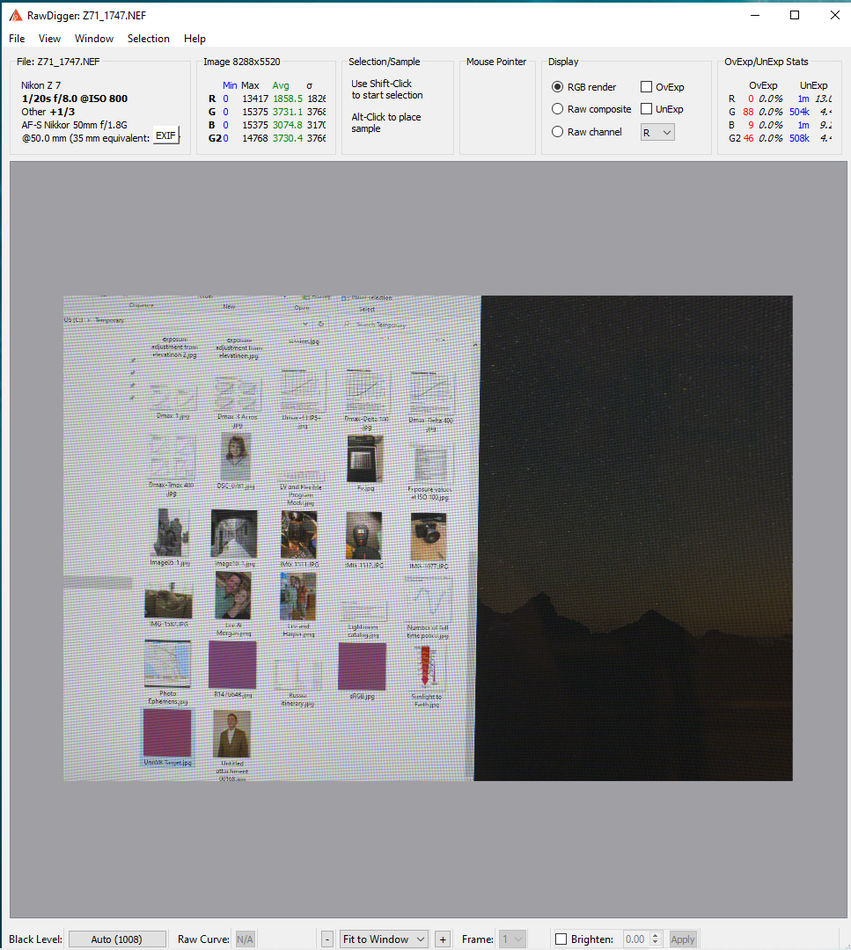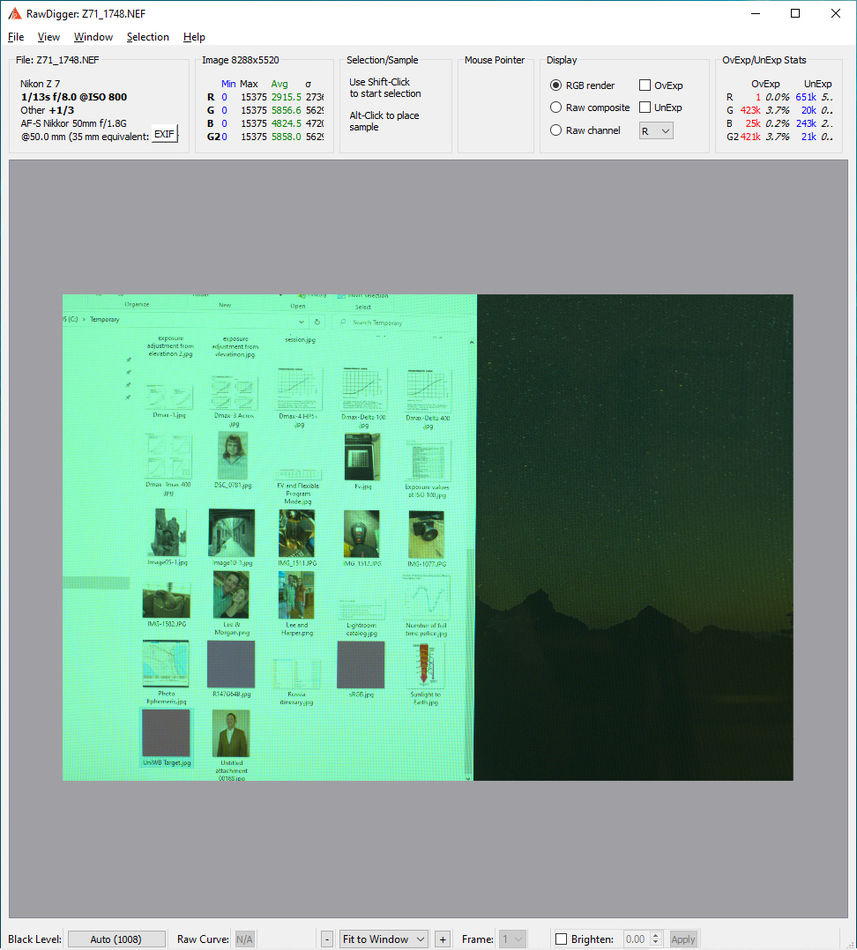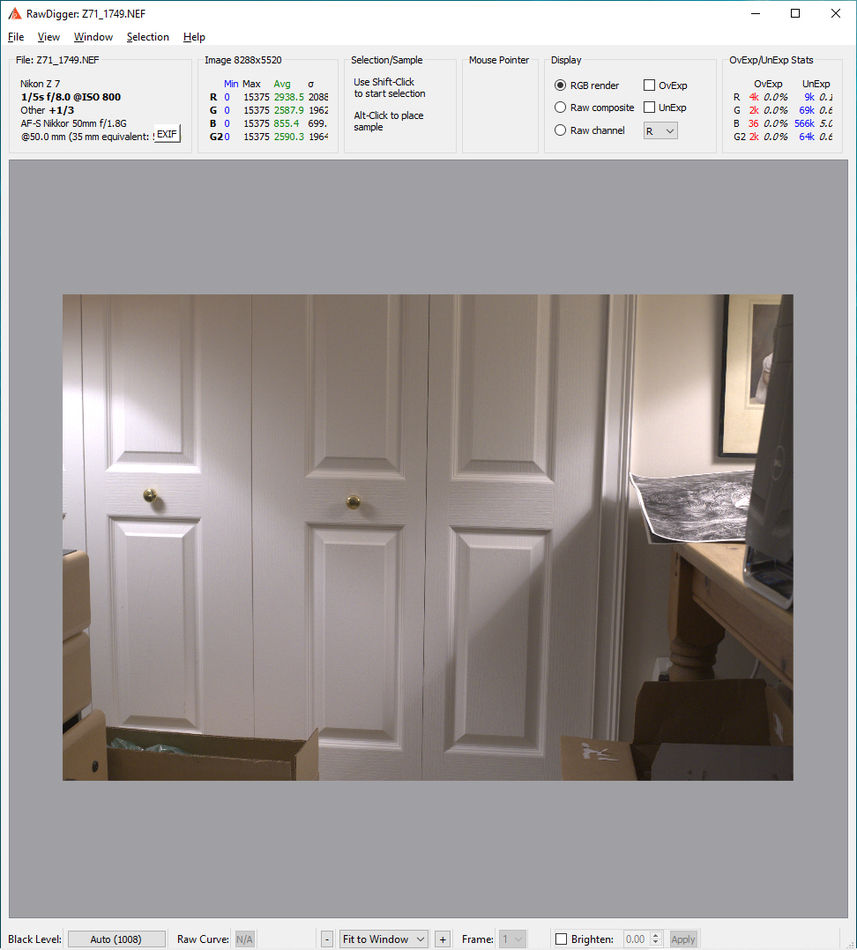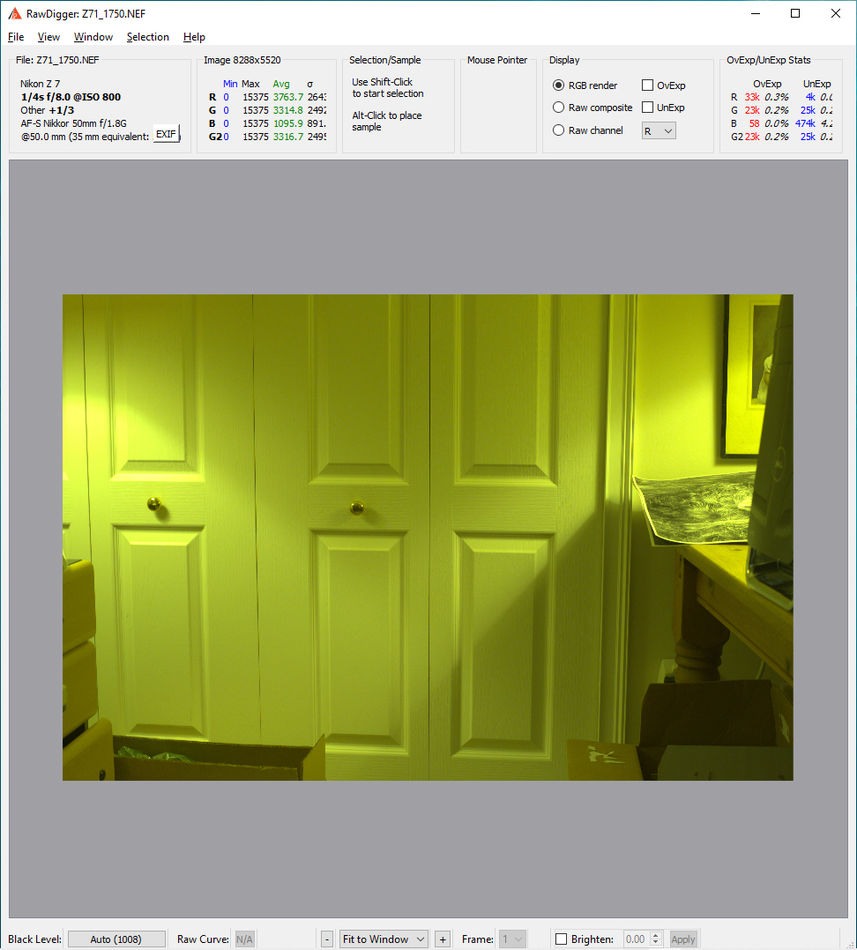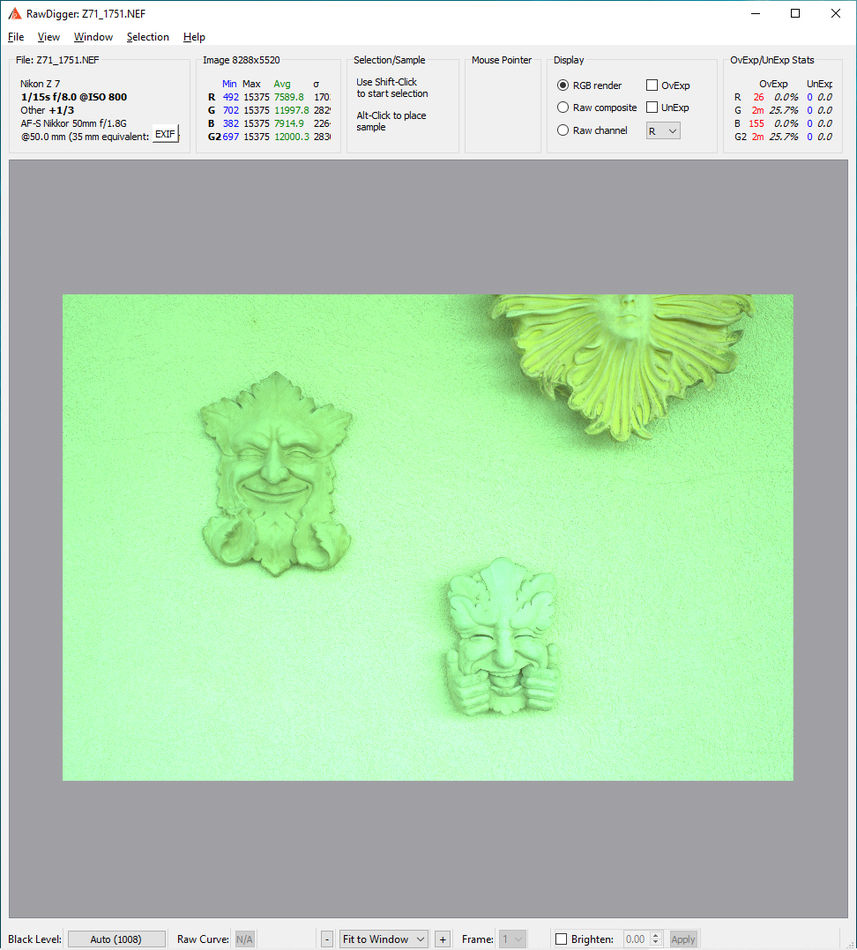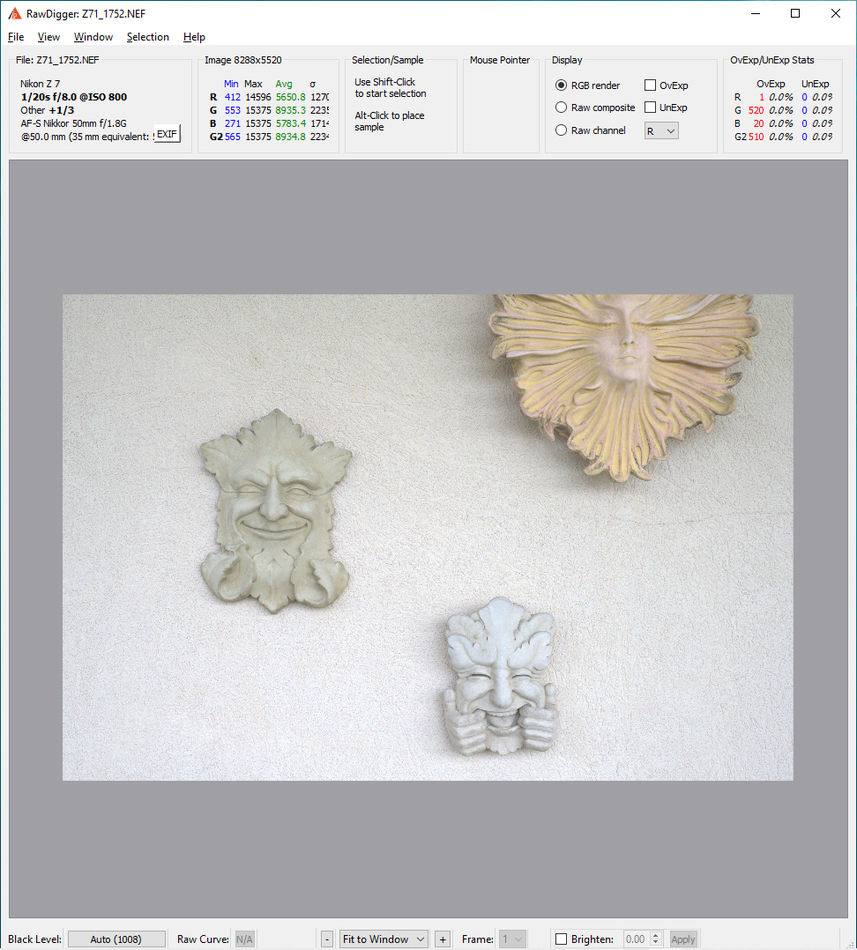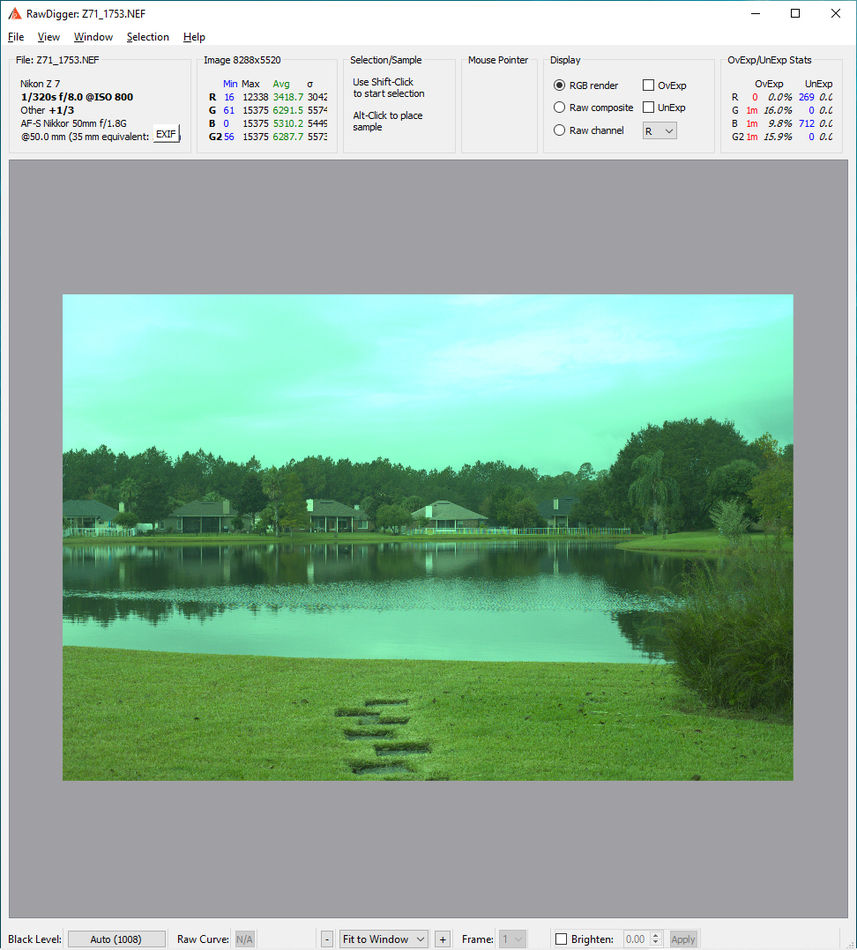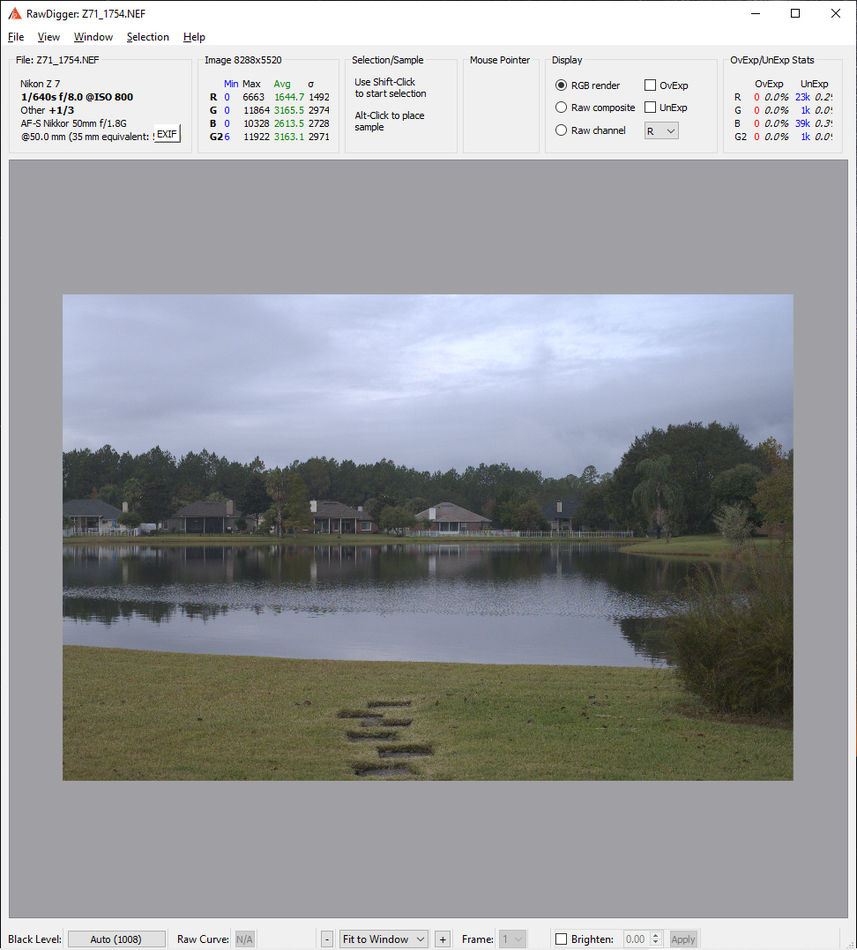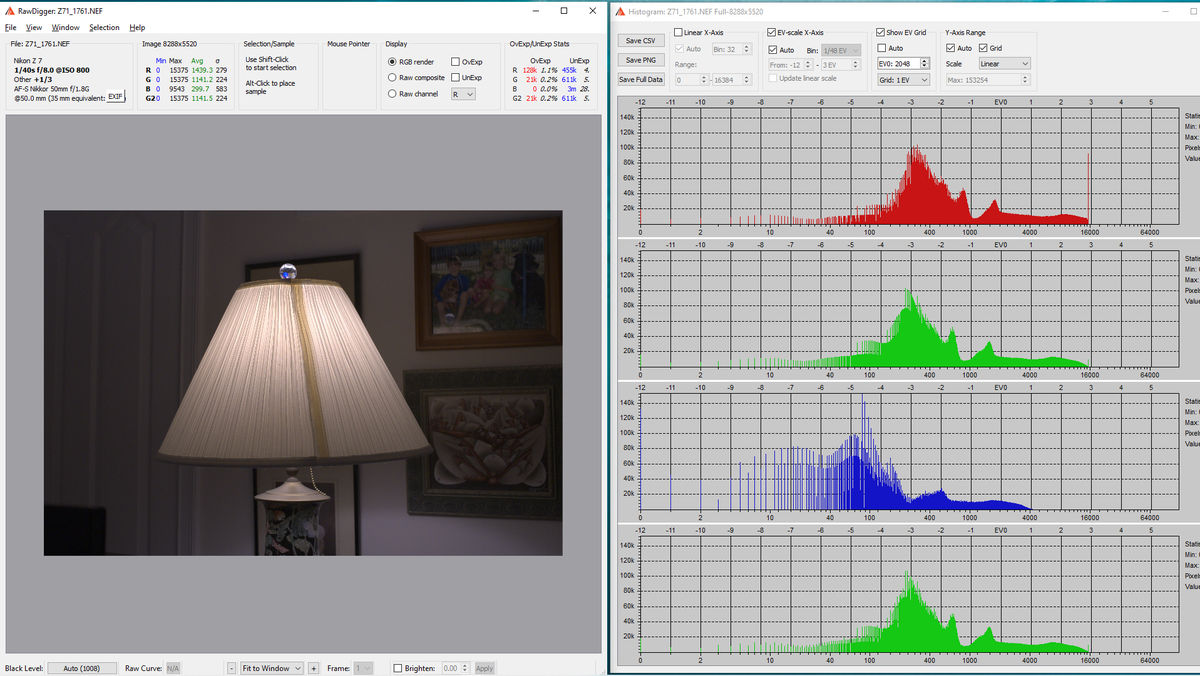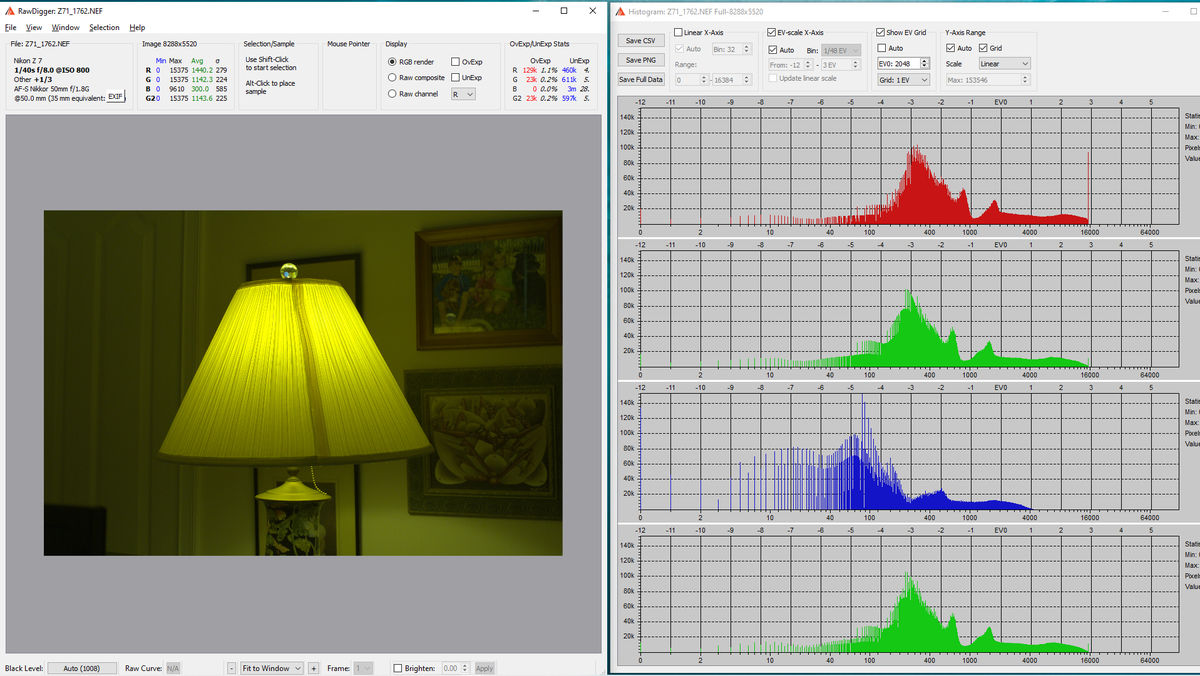UniWB - Mystique or Myth
Nov 22, 2021 11:08:37 #
Does it work or is it a waste of time?
You can find a lot of information on it within UHH and elsewhere on the internet. Look for UniWB, unitary white balance, universal white balance.
The theory is that, with the camera's custom white balance set to UniWB, the camera's luminance histogram becomes a more accurate representation of where the highlights meet the upper limit [of the raw file]. As you frame your shot you can watch the luminance histogram as you increase the exposure. When it reaches the right edge of the display you will achieve ETTR, exposing to the right.
Before you go to a lot of trouble and effort you might want to try a simple experiment. The next post will contain a white balance (WB) target that you can use to set a custom WB in your camera. While this might not be exactly the correct way to get it set, it's a lot simpler than some of the convoluted methods recommended in the literature.
I performed a test using a Nikon Z7 and a variety of scenes with wide and narrow dynamic ranges (DR). I shot each scene by carefully adjusting the shutter speed to move this histogram to the right edge using Auto0 WB and UniWB. The results are in the next post.
You can find a lot of information on it within UHH and elsewhere on the internet. Look for UniWB, unitary white balance, universal white balance.
The theory is that, with the camera's custom white balance set to UniWB, the camera's luminance histogram becomes a more accurate representation of where the highlights meet the upper limit [of the raw file]. As you frame your shot you can watch the luminance histogram as you increase the exposure. When it reaches the right edge of the display you will achieve ETTR, exposing to the right.
Before you go to a lot of trouble and effort you might want to try a simple experiment. The next post will contain a white balance (WB) target that you can use to set a custom WB in your camera. While this might not be exactly the correct way to get it set, it's a lot simpler than some of the convoluted methods recommended in the literature.
I performed a test using a Nikon Z7 and a variety of scenes with wide and narrow dynamic ranges (DR). I shot each scene by carefully adjusting the shutter speed to move this histogram to the right edge using Auto0 WB and UniWB. The results are in the next post.
Nov 22, 2021 11:18:54 #
First, the target I used to set the custom WB to a version of UniWB:

This summarizes my results:

In every instance but the last UniWB overexposed the image significantly more than simply watching the luminance histogram with a normal WB. The difference was only about 1/3 or 2/3 stops until the last shot where both images were grossly overexposed.

This summarizes my results:

In every instance but the last UniWB overexposed the image significantly more than simply watching the luminance histogram with a normal WB. The difference was only about 1/3 or 2/3 stops until the last shot where both images were grossly overexposed.
Nov 22, 2021 11:21:59 #
In the final shot the blinkies were flashing so clearly that I would have known I had to reduce the exposure.
Nov 22, 2021 11:23:42 #
Nov 22, 2021 11:30:44 #
Nov 22, 2021 13:49:07 #
selmslie wrote:
In the final shot the blinkies were flashing so clearly that I would have known I had to reduce the exposure.
The difference between the UniWB blinkies where 4.5 MP of raw data was blown at 1/640s and the Auto WB with 9 MP of raw data blown at 1/500s was only 1/3 stop.
But the difference in blinkies was dramatic.
Enough said?
Almost no blinkies in the UniWB version - almost no warning that the raw highlights are blown
Attached file:
(Download)
The entire sky is blinking in the Auto WB version
Attached file:
(Download)
Nov 22, 2021 15:31:57 #
Ysarex
Loc: St. Louis
selmslie wrote:
The theory is that, with the camera's custom white balance set to UniWB, the camera's luminance histogram becomes a more accurate representation of where the highlights meet the upper limit [of the raw file].
For heaven's sake NO! You can find something that dumb on the internet if you look for it, but you should have enough sense not to swallow it.

Talk to folks who know how to do this and the first thing they'll tell you is that ETTR requires a degree of precision that is not provided by a luminance histogram. Especially not the low-res teensy live-view histogram you get with a Z-7 EVF/LCD. You need to be able to check for clipping in individual channels which is info the luminance histogram won't give you.
You found Uni-WB worthless when you used the wrong tools -- duuuuh.
Nov 22, 2021 15:53:01 #
Ysarex wrote:
Talk to folks who know how to do this and the first thing they'll tell you is that ETTR requires a degree of precision that is not provided by a luminance histogram. Especially not the low-res teensy live-view histogram you get with a Z-7 EVF/LCD.
You need to be able to check for clipping in individual channels which is info the luminance histogram won't give you.
You found Uni-WB worthless when you used the wrong tools
You need to be able to check for clipping in individual channels which is info the luminance histogram won't give you.
You found Uni-WB worthless when you used the wrong tools
That's exactly what I just demonstrated. UniWB is tedious and does not produce the desired results. You can't use it for ETTR the way that ETTR is generally understood - exposing to the right of the luminance histogram in the camera.
What is clear is that other methods that rely on an understanding of raw values are more reliable - blinkies, zebra and highlight weighted metering. Compared to them, UniWB is worthless - period!
One of our resident UniWB authorities you might think is one of the "folks who know how to do this" has made the claim that uses UniWB all of the time and often sees "blinkies flashing all over the place". Really? I got 4.5 MP of blown highlights and hardly any blinkies.
If you think that you understand the subject, why don't you post your own thread on UniWB and tell us all about it.
Nov 22, 2021 16:04:35 #
Ysarex
Loc: St. Louis
selmslie wrote:
What is clear is that other methods that rely on an understanding of raw values are more reliable - blinkies, zebra and highlight weighted metering.
Uni-WB can be used in conjunction with blinkies to make the blinkies more accurate to the raw file. The blinkies change with the WB setting. If the camera supports live-view blinkies (Z7 does not) then blinkies in combination with Uni-WB can be quick and effective and more precise than blinkies alone. (You do need to understand how blinkies are working on your camera.)
Nov 22, 2021 16:55:26 #
Ysarex wrote:
Uni-WB can be used in conjunction with blinkies to make the blinkies more accurate to the raw file. The blinkies change with the WB setting. ... (You do need to understand how blinkies are working on your camera.)
I understand how blinkies work on my cameras.
Below are two images captured at the same exposure - 1/40s @ f/8 ISO 800. I had increased the exposure until I saw some blinkies in the Auto0 WB version. Then I switched to UniWB and took a second shot at the same exposure. The camera's luminance histogram barely moved when I switched the WB setting. The raw histograms are identical. And the number of blown raw pixels are almost identical.
The blinkies showed up in the Auto0 WB version but not in the UniWB version. So UniWB didn't help at all.
Now do your homework and post your own thread.
Nov 22, 2021 17:25:31 #
Ysarex
Loc: St. Louis
selmslie wrote:
The blinkies showed up in the Auto0 WB version but not in the UniWB version.
So the blinkies are responsive to the WB setting. That's information that can be useful to someone who wants to test their camera and apply that information.
selmslie wrote:
So UniWB didn't help at all.
It didn't help you because you're already biased against something you have no experience using. And of course there's the other critical factor that all other cameras used by all the rest of us can only work the way Scotty's camera works. So if Scotty's camera doesn't show Uni-WB useful when Scotty uses the wrong tools then it can't possibly be useful for anybody.

Nov 22, 2021 17:38:06 #
Ysarex wrote:
So the blinkies are responsive to the WB setting. That's information that can be useful to someone who wants to test their camera and apply that information.
That would mean that the blinkies are useless for Auto WB since that can be unpredictable.
Ysarex wrote:
It didn't help you because you're already biased against something you have no experience using. And of course there's the other critical factor that all other cameras used by all the rest of us can only work the way Scotty's camera works. So if Scotty's camera doesn't show Uni-WB useful when Scotty uses the wrong tools then it can't possibly be useful for anybody.
I'm not going to engage with you in another pissing contest. You are a bigger waste of my time than UniWB.
If you think that UniWB is useful, create your own thread and prove it. If you can't or won't do it then just go away.


Nov 22, 2021 18:01:58 #
Ysarex
Loc: St. Louis
selmslie wrote:
That would mean that the blinkies are useless for Auto WB since that can be unpredictable.
But for Uni-WB they are predictable and so useful.
The blinkies will also responded differently between Uni-WB and any of the camera's WB presets. That difference can be useful to someone who wants to take advantage of it.
Nobody is making you use Uni-WB. But by badly describing it's use with ETTR (luminance histogram) you're demo here is worthless.
Nov 22, 2021 18:09:32 #
Ysarex wrote:
But for Uni-WB they are predictable and so useful.
The blinkies will also responded differently between Uni-WB and any of the camera's WB presets.
The blinkies will also responded differently between Uni-WB and any of the camera's WB presets.
Since they don't even show up under UniWB until it's too late, they are useless.
They show up earlier under Daylight WB. That's where they are useful. That's why my camera is set to Daylight WB all of the time.
But this thread is about UniWB, not blinkies. If you can't demonstrate how UniWB provides any benefits then we are done here.
Start your own thread.
Nov 22, 2021 18:29:36 #
a6k
Loc: Detroit & Sanibel
selmslie wrote:
I understand how blinkies work on my cameras. br ... (show quote)
in this particular post within your thread, IF I understand correctly, you took two exposures of the same subject using the same shutter speed and aperture. Since the screen captures were done from RawDigger you must have been looking at a raw file in both. So how did you get the raw file to be different? Hasn't it been demonstrated many times that raw exposure files ignore WB settings? What am I missing?
When I look at the numbers at the top of the RawDigger screen they look essentially the same. But the visual representation is different. What causes this?
If you want to reply, then register here. Registration is free and your account is created instantly, so you can post right away.

